RBA expected to cut interest rates for the first time since 2020
The RBA is widely expected to lower the cash rate by 25 basis points to 4.10% in its first meeting of 2025. With Australia’s economy showing signs of stagnation and inflation tracking below forecasts, market expectations for a rate cut have surged.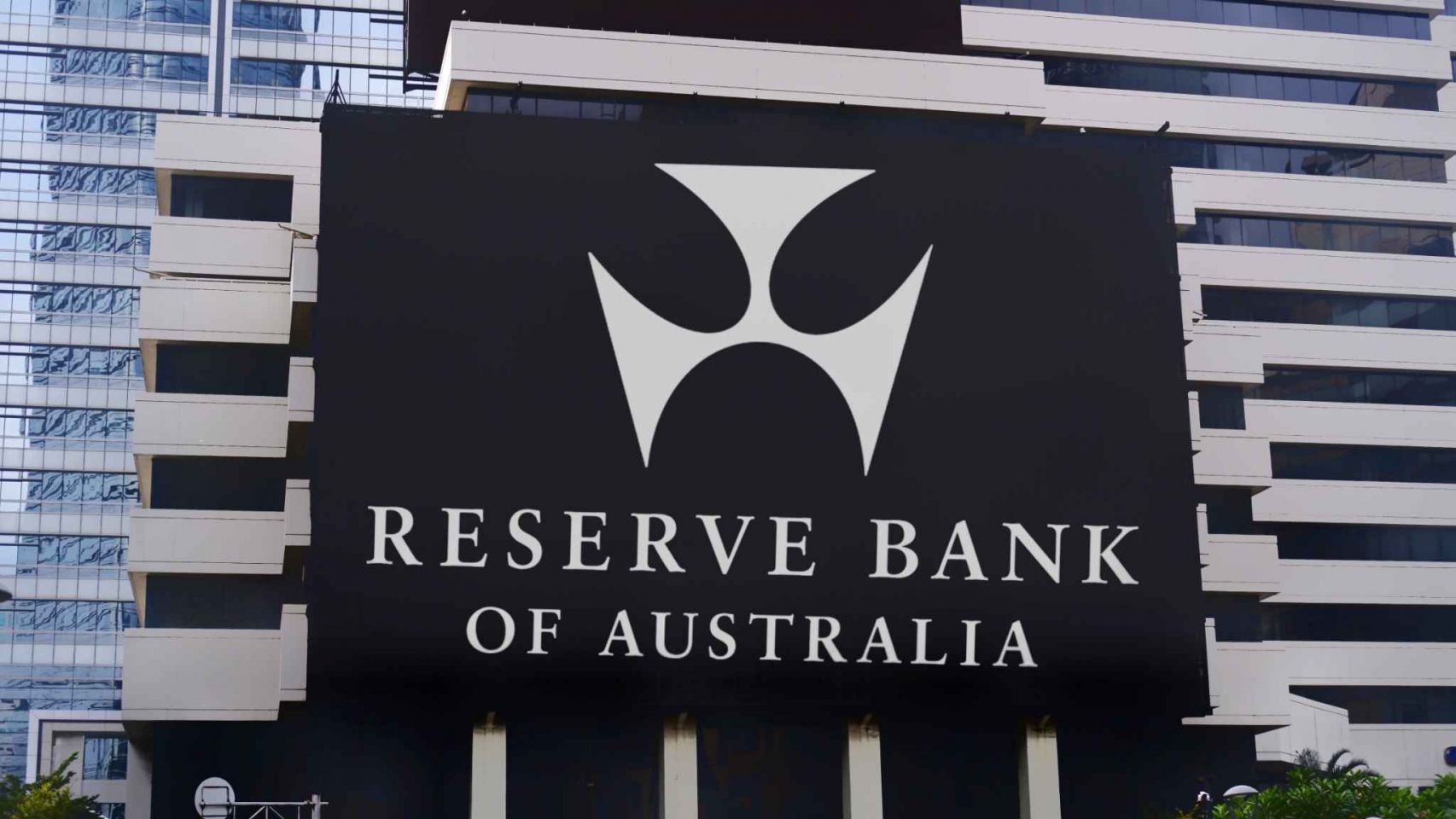
The Reserve Bank of Australia is widely expected to lower interest rates when it meets for the first time in 2025. The RBA is tipped to cut the cash rate by 25 basis points to 4.10%, the first drop in the policy rate since November, 2020 when the central bank lowered it to 0.10% to support the Australian economy during the COVID-19 pandemic.
Expectations of an RBA cut have built since the end of 2024 when the September quarter GDP figures revealed an economy teetering on the edge of recession. Growth expanded at a paltry 0.8% for the full year, with the data showing that economic activity was supported only by public demand – mostly government spending associated with health care policies – and high net overseas migration, with growth in per capita terms negative for a seventh successive quarter.
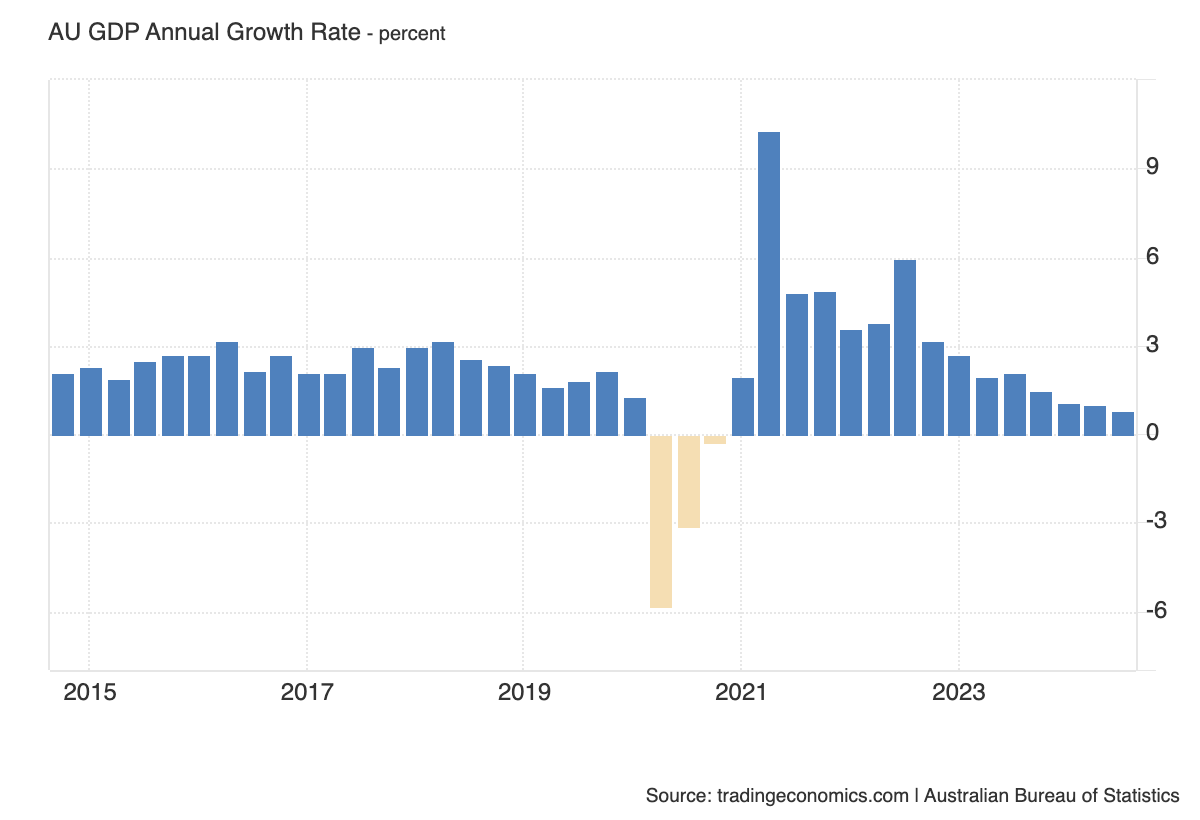
(Source: Trading Economics)
Despite tangibly weak growth conditions throughout 2024, the RBA had pushed back on lowering rates. It stated that even in light of anaemic growth, the level of aggregate demand remained out of balance with aggregate supply, keeping inflation elevated. As a result, it adopted a neutral policy bias throughout the year, stating it would not rule “anything in or out” regarding future policy decisions.
The RBA’s guidance pivoted in response to the September GDP release, with the markets subsequently raising expectations of a cut following inflation data in January. The November CPI Indicator hinted that inflation was tracking below the RBA’s forecasts for the end of 2024, with the official December quarter CPI Index confirming trimmed mean CPI rose 3.2% for the period. This was below the 3.4% the RBA had projected, and predicated its neutral policy stance upon.
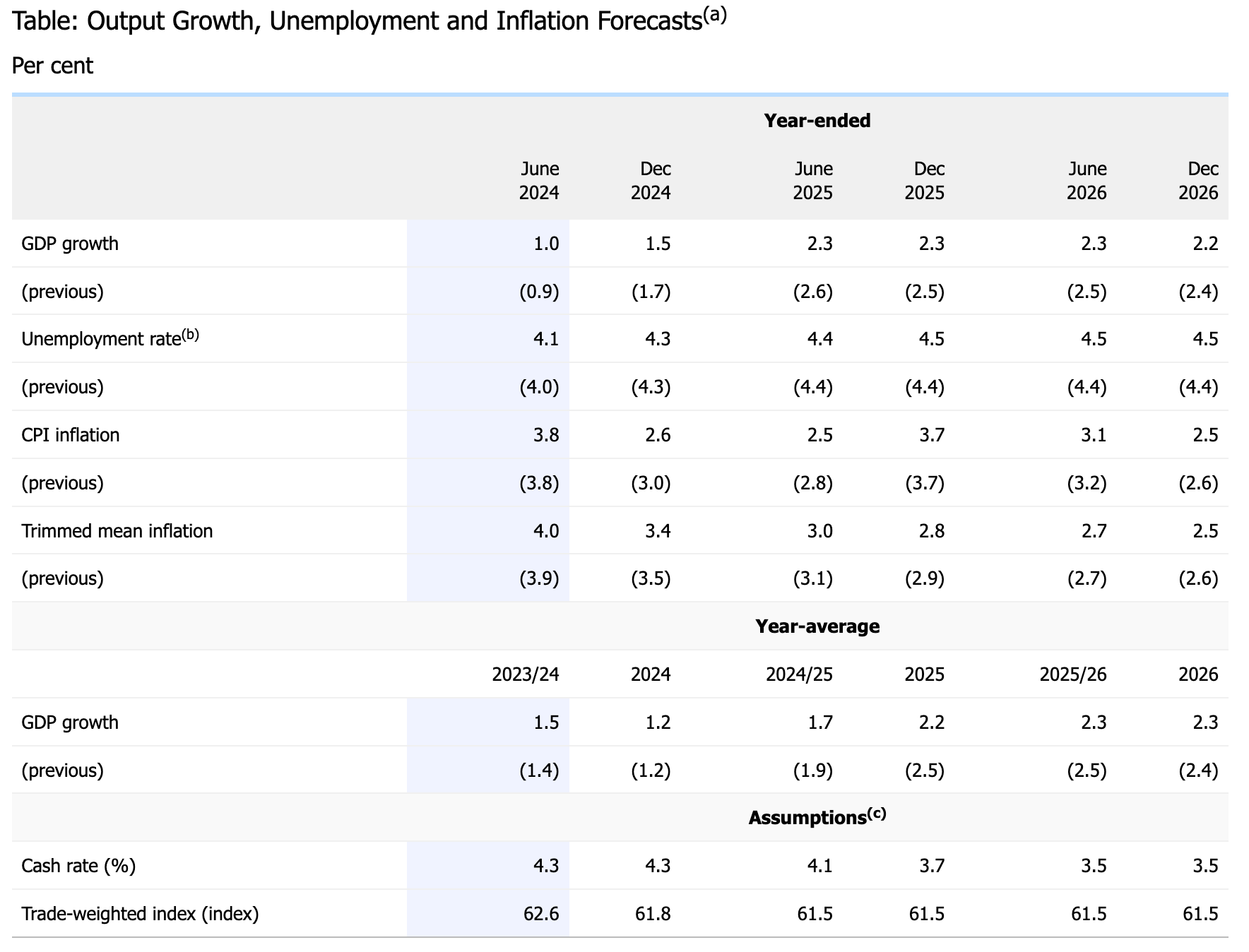
(Source: RBA)
The markets are now pricing in an approximately 80 to 90 percent implied probability of a rate cut. Some commentators have suggested that the RBA ought not to cut with inflation still above the target band. Meanwhile, guidance from the central bank in the past indicated that it would need to see two successive quarters of good inflation data before cutting. Nevertheless, the lack of push back on market pricing from RBA members leading into the meeting hints that a cut is likely.
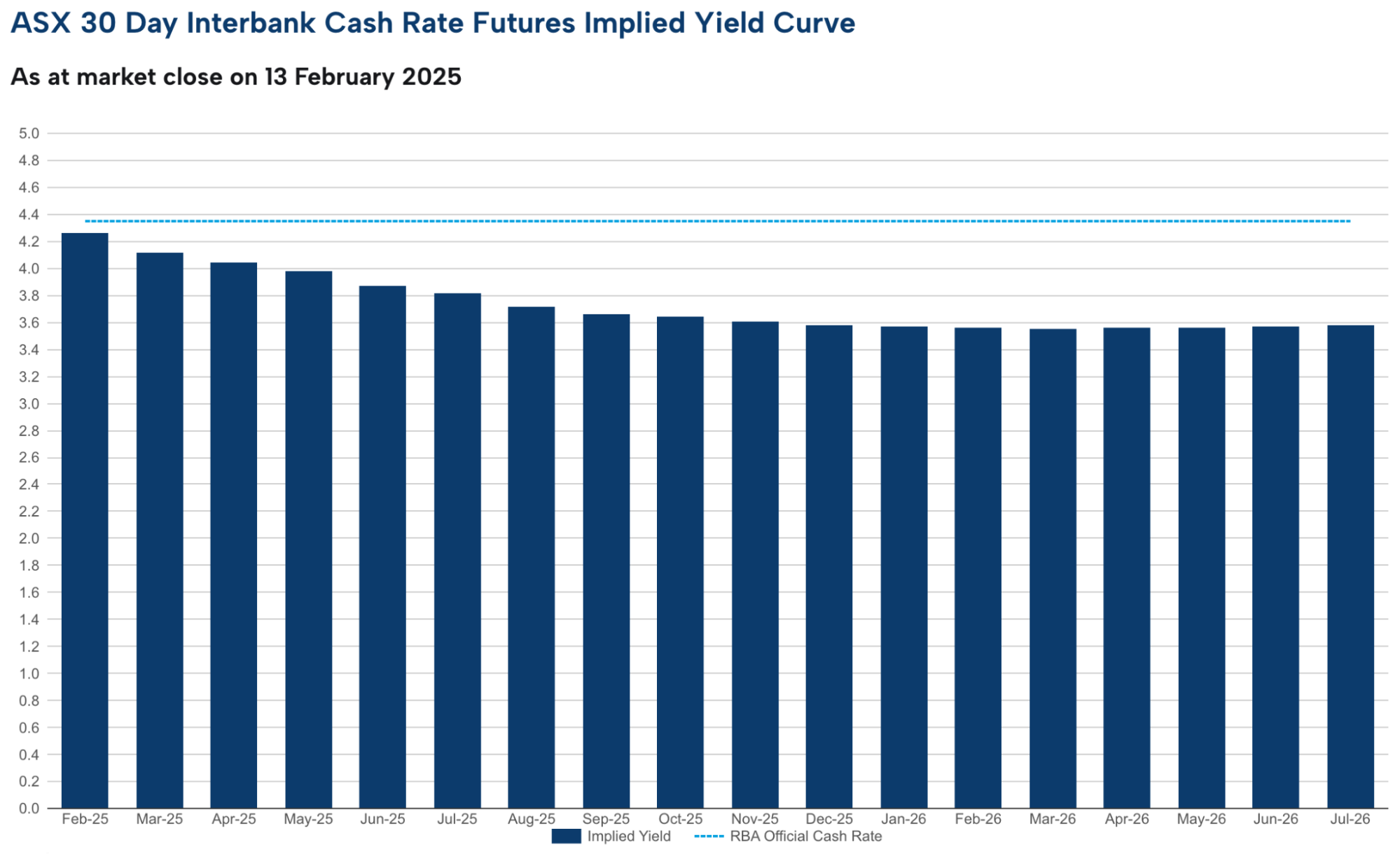
(Source: RBA Rate Tracker)
A critical set of labour market figures will be released following the RBA decision on Tuesday, which economists predict will support the RBA’s decision to lower rates. The Australian Bureau of Statistics publishes quarterly Wage Price Index data on Wednesday, followed by the monthly Labour Force statistics on Thursday. The data is forecast to show moderate strength in labour demand but easing wage pressures in the Australian economy. The unemployment rate is forecast to tick modestly higher to 4.1%, while wage growth is expected to slow to 3.2%.
Although rate cut expectations have weighed on the AUD/USD, the pair primarily remains a function of sentiment about global trade wars, Chinese economic activity, and US economic outperformance. From a technical perspective, the AUD/USD is still in a downtrend, with price action carving out what appears to be a possible continuation pattern; 0.6340 stands out as a critical level of resistance, while a break lower may see the pair retest recent lows.
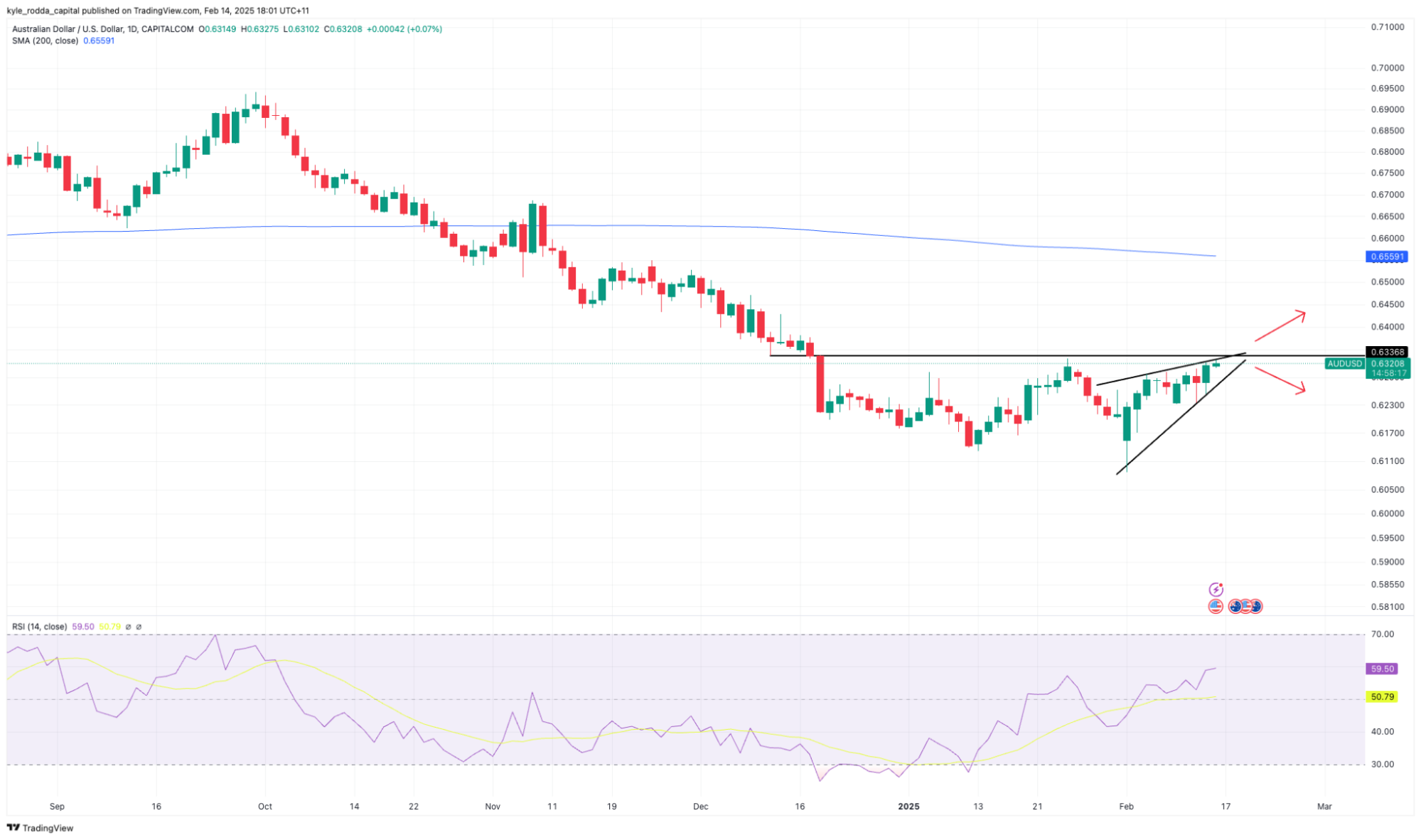
(Source: Trading View)
(Past performance is not a reliable indicator of future results)
References
- https://www.asx.com.au/markets/trade-our-derivatives-market/futures-market/rba-rate-tracker
- https://www.rba.gov.au/statistics/cash-rate/
- https://tradingeconomics.com/australia/gdp-growth-annual
- https://www.abs.gov.au/statistics/labour/employment-and-unemployment/labour-force-australia/latest-release